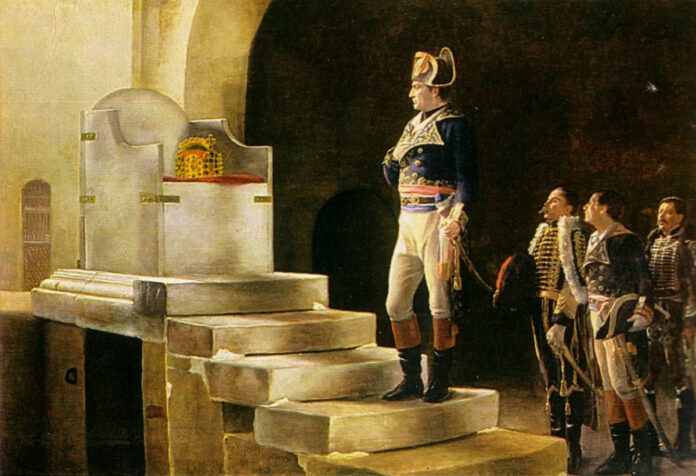The Seat of Kings in Aachen Cathedral
In the heart of Aachen Cathedral, Germany, sits a throne that has witnessed the crowning of kings and the shaping of European history. This is Charlemagne’s Throne, a silent testament to the power and legacy of the Holy Roman Empire.
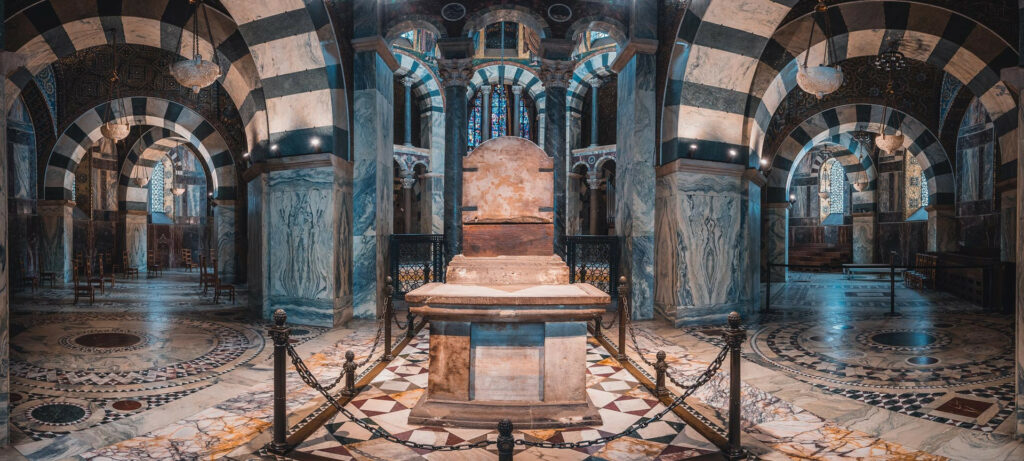
The Birth of an Empire
As the sun rose over medieval Europe, a man named Charles the Great, better known as Charlemagne, ascended to power. In the year 800 AD, he was crowned the first Holy Roman Emperor, ushering in an era of cultural revival known as the Carolingian Renaissance.
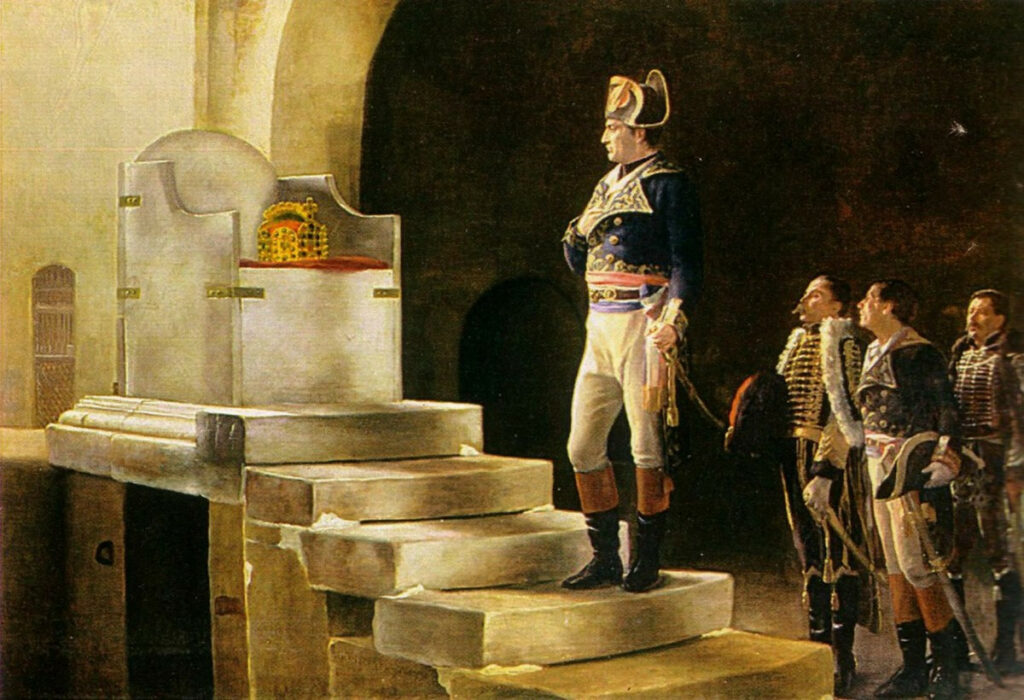
Charlemagne chose Aachen as his imperial capital, drawn by its strategic location and soothing hot springs. Here, he built his grand Palatine Chapel, now part of the majestic Aachen Cathedral.
A Throne Fit for Emperors
At the heart of this architectural marvel stands Charlemagne’s Throne. Crafted from marble slabs believed to have come from the Church of the Holy Sepulchre in Jerusalem, the throne exudes an air of sacred authority.
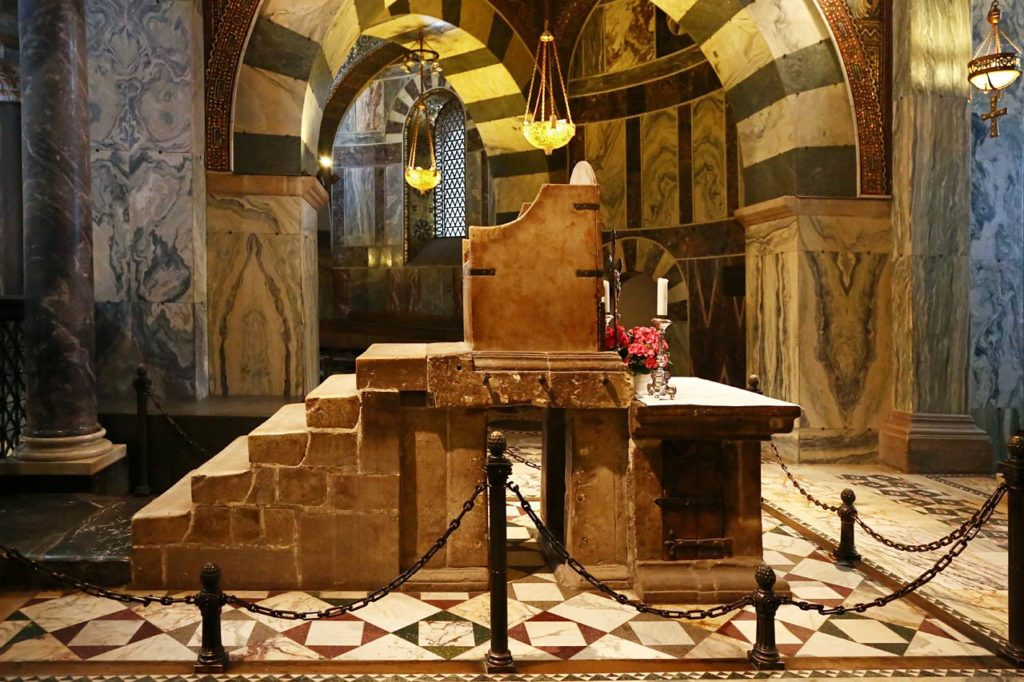
Its design is simple yet powerful – a solid marble seat supported by stone slabs, with a straight backrest and no armrests. This austere appearance reflects the early medieval aesthetic and perhaps Charlemagne’s own preference for simplicity.
Crowning Glory
For over seven centuries, Charlemagne’s Throne served as the coronation seat for German kings. Thirty-one monarchs ascended its steps, each connecting themselves to the legacy of Charlemagne and reinforcing the continuity of the Holy Roman Empire.
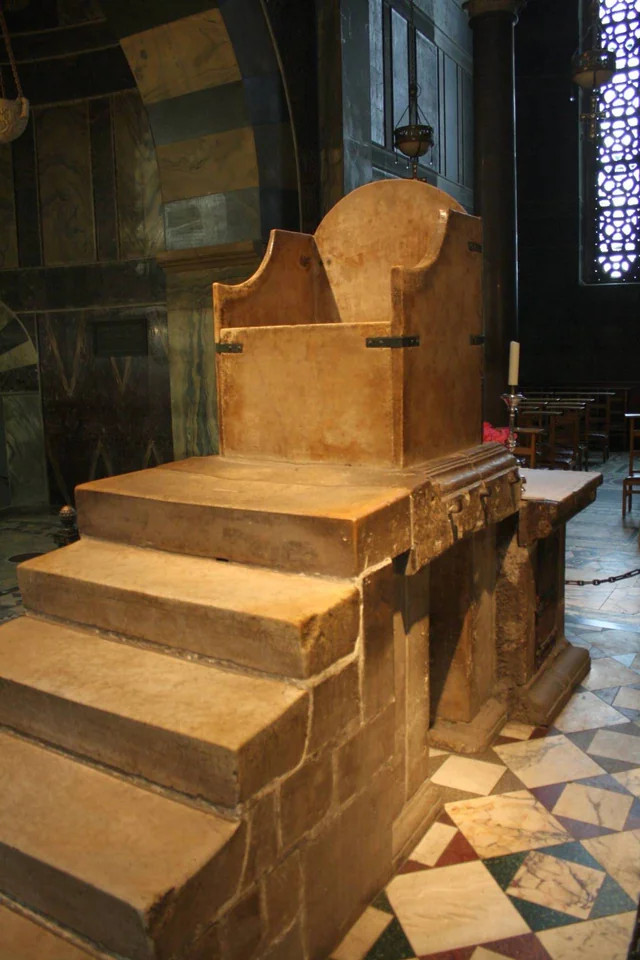
The last coronation on this hallowed seat took place in 1531 when Ferdinand I was crowned. Though its role in coronations ended, the throne’s significance endured.
A Legacy Carved in Stone
The Palatine Chapel: A Masterpiece of Architecture
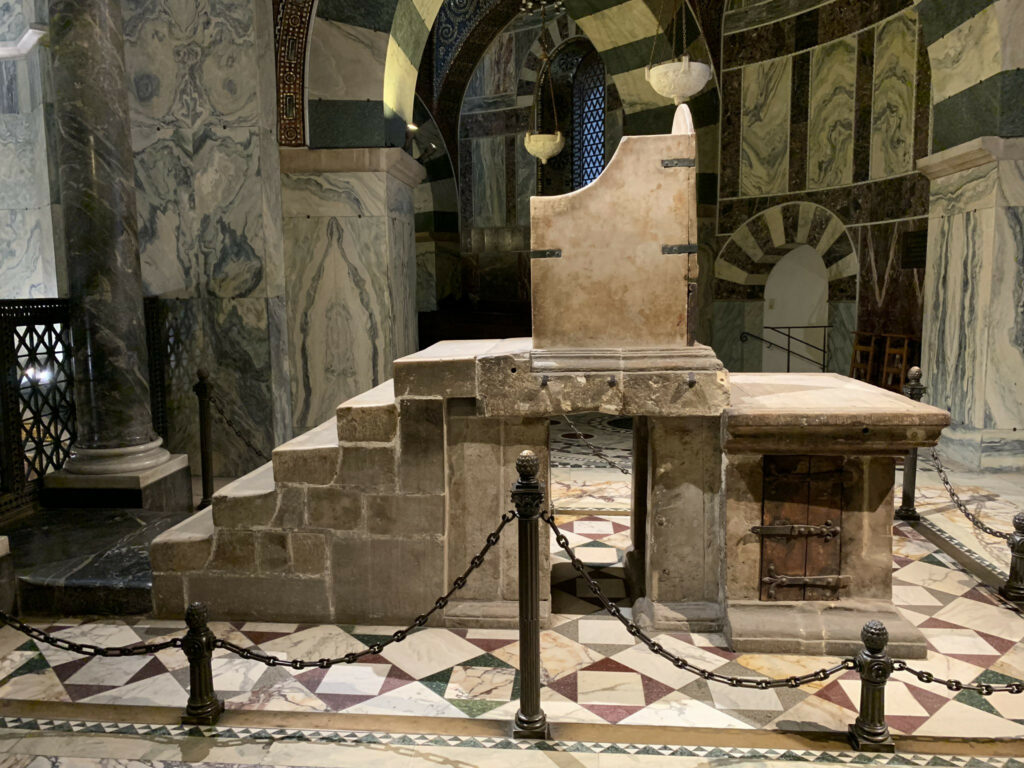
Surrounding the throne is the breathtaking Palatine Chapel. Its octagonal shape and Byzantine-inspired design showcase the fusion of Eastern and Western Christian traditions. Intricate mosaics, marble columns, and precious stones adorn the interior, testament to the artistic achievements of the Carolingian Renaissance.
A Modern-Day Monument
Today, Aachen Cathedral and Charlemagne’s Throne stand as a UNESCO World Heritage Site, drawing visitors from around the world. The throne remains a powerful symbol of medieval kingship and European unity, offering a tangible link to a pivotal period in history.
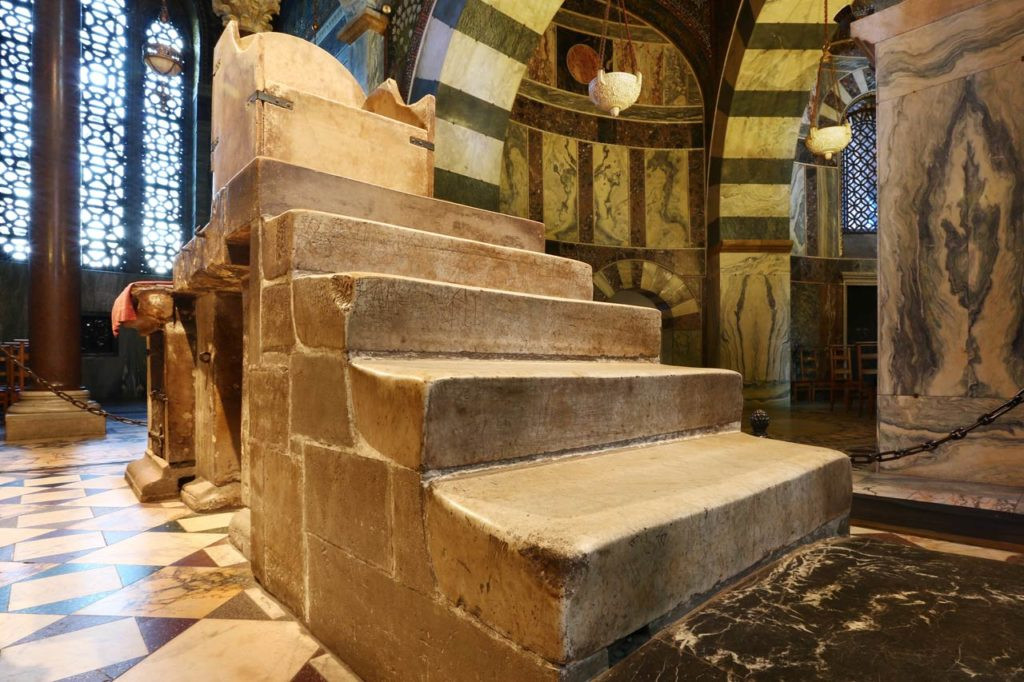
As you stand before Charlemagne’s Throne, you can almost hear the echoes of coronations past and feel the weight of centuries of European history. It serves as a reminder of the rich tapestry of our shared past and the enduring legacy of one of history’s greatest rulers.
